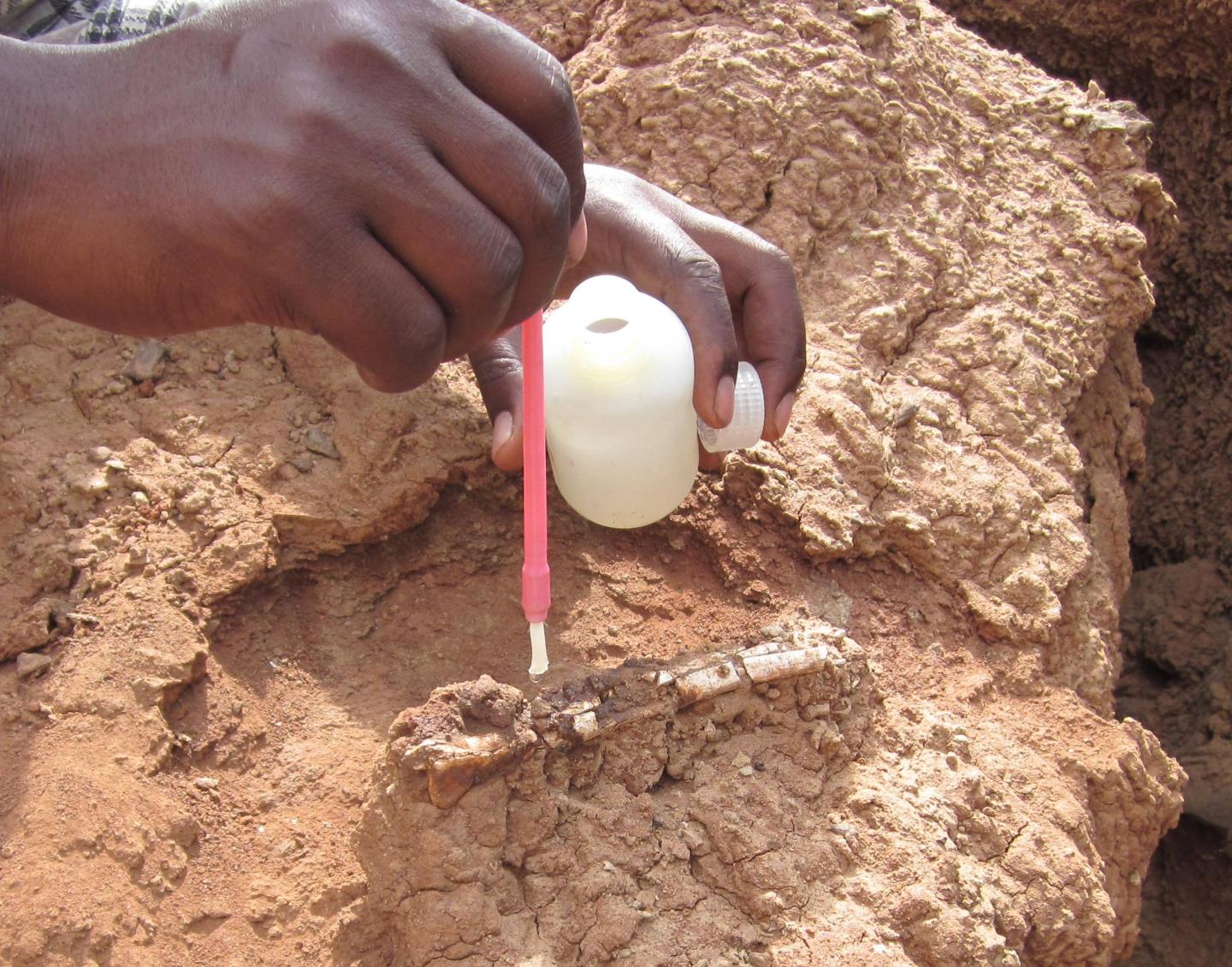UNLV geoscientist, student among international research team behind discovery of ancient monkey species that lived in Africa 22 million years ago

Credit: Terry Spell/UNLV
Researchers have used fossilized teeth found near Lake Turkana in northwest Kenya to identify a new monkey species — a discovery that helps fill a 6-million-year gap in primate evolution.
UNLV geoscientist Terry Spell and former master’s student Dawn Reynoso were part of the international research team that discovered the species that lived 22 million years ago. Understanding the evolution of Old World monkeys is important because, along with the great apes and humans, they belong to the anthropoid group of primates — primates that resemble humans.
According to Spell, the monkey fossil discovery grew out of a more extensive study of a section of sedimentary rocks in Kenya that contain a large number of different types of fossils, including several hundred mammal and reptile jaws, limbs, and teeth.
Previous studies had documented the early evolution of Old World monkeys using fossils dated at 19 million and 25 million years old, leaving a 6-million-year gap in the earliest record. However, the new fossil was determined to be 22 million years in age. Isotopic ages on the rocks were obtained in the Nevada Isotope Geochronology Laboratory on the UNLV campus.
“This adds to our understanding of the earliest evolutionary history of Old World monkeys, including changes in their diet with time to include more leaves,” Spell said. “Monkeys originated at a time in the past when Africa and Arabia were together as an island continent. Plate tectonic motions pushed this land mass into the Eurasian land mass at 20 to 24 million years ago, and an exchange of animals and plants occurred. It is unclear if competition with newly introduced species or changing climate conditions drove changes in diet.”
Scientists named the newly discovered monkey species Alophia (“without lophs”) due to the lack of molar crests on its teeth — a phenomenon that sets them apart from geologically younger monkey fossils.
Old World monkeys are the most successful living superfamily of nonhuman primates with a geographic distribution that is surpassed only by humans. The group occupies a wide spectrum of land to tree habitats and have a diverse range of diets. They evolved to develop a signature dental feature — having two molar crests — which to this day allows them to process a wide range of food types found in the varying environments of Africa and Asia.
###
Others involved in the research were scientists from nine U.S. universities and a foreign national museum.
“Primitive Old World monkey from the earliest Miocene of Kenya and the evolution of cercopithecoid bilophodonty” was published in Proceedings of the National Academy of Sciences.
Media Contact
Keyonna Summers
[email protected]
Original Source
https:/
Related Journal Article
http://dx.




